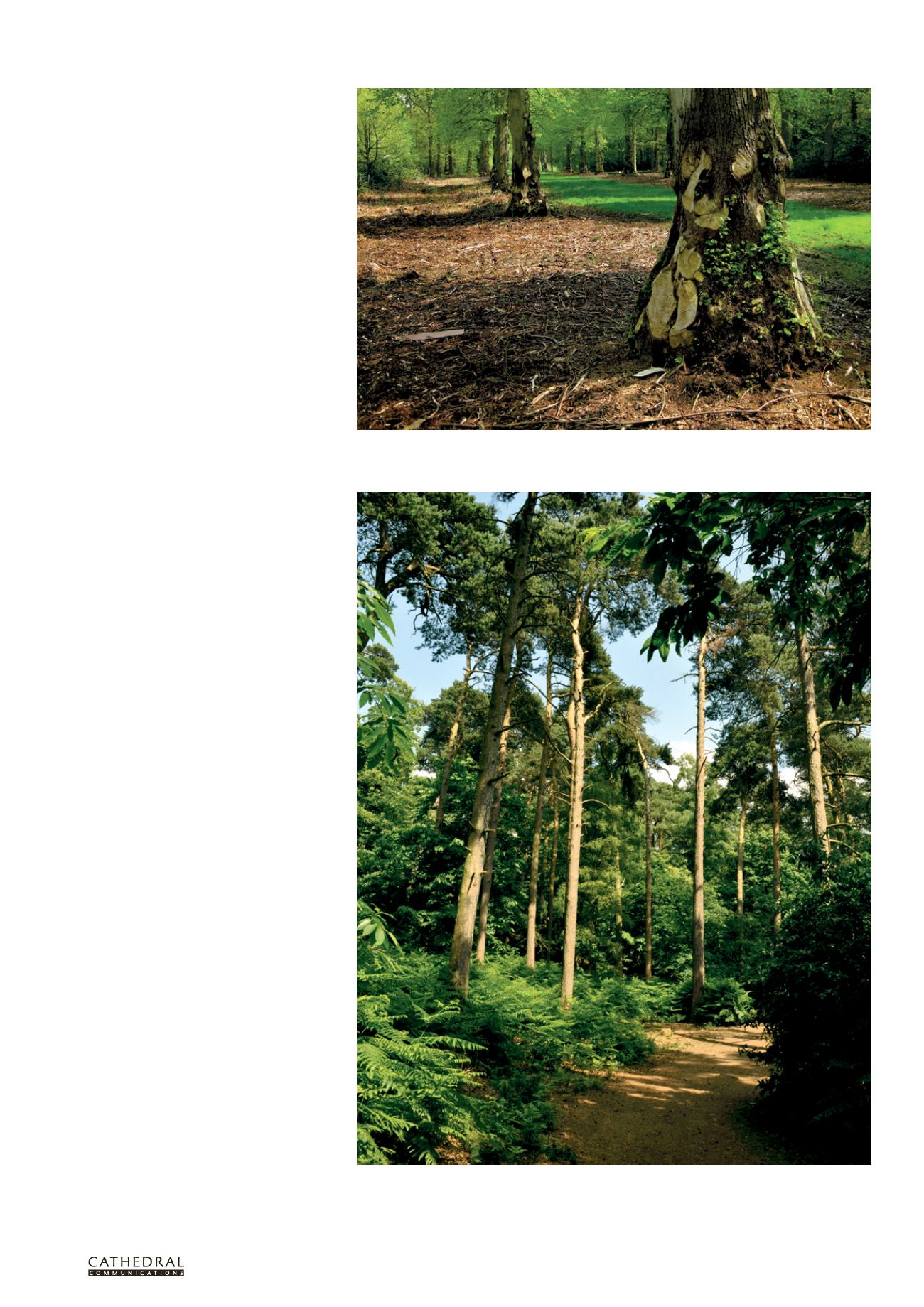
T W E N T Y F I R S T E D I T I O N
T H E B U I L D I N G C O N S E R VAT I O N D I R E C T O R Y 2 0 1 4
1 2 9
3.4
STRUCTURE & FABRIC :
EX TERNAL WORKS
nature and severity of potential hazards,
including falling limbs. It is, however, worth
highlighting the fact that many problems
can be avoided through good management
and measures such as re-routing paths away
from dead or dying trees. All owners and site
managers must of course consider the safety
of the public and those visiting the area.
Trees should have regular inspections by a
qualified arboriculturalist to assess the risks.
Landowners also have a statutory duty to
keep public rights of way free of obstructions
including fallen trees and branches. However,
dead wood should be retained for the
benefit of wildlife where it is safe to do so.
Prevention of damage to trees can be
achieved by providing sufficient clearance
between trees and machinery or cattle.
Vehicle movements over the root zones of
trees should be avoided, particularly with
mature trees. Materials should not be placed
near trees and fertilisers should not be used
in their vicinity. Substantial wooden cages
should be erected around vulnerable trees at
risk of stock damage through compaction or
physical damage.
One of the main causes of veteran tree
death is branch, stem or rootplate failure.
The key aim of any veteran tree management
programme should be to enhance tree
longevity wherever possible to ensure there
is no unnecessary loss of veteran trees. This
enhancement of tree longevity can be achieved
by improving the structural and physiological
condition of the trees. Where a tree is at risk
of catastrophic failure, remedial works can
be used to stabilise the tree. Typically these
will be targeted to reduce the end-loading on
limbs and rebalance the tree. Where trees
are assessed as showing signs of physiological
stress, management may focus on promoting
vitality. This can be achieved by reducing
competition for resources around the tree and
improving the root soil condition.
Developing a replanting strategy
is an important stage to ensure future
replenishment of tree stock (including veteran
trees) and habitat. It is possible to manage the
veteran tree resource through implementation
of selected individual veteran tree
management plans with the aim of maximising
longevity of veteran trees to ensure continuity
of habitat and lack of disturbance to maximise
the ecological resource.
SEBASTIANWEST
BSc(Hons) CMLI is a
landscape manager at LUC
).
ERIC HEATH
MSc MCIEEM is senior ecologist
at LUC. The company is a specialist
environmental planning, landscape design
andmanagement consultancy founded in
1966. LUC has helped to guide the future
direction of landscapes such as Stowe, Wilton,
Grey’s Court, The Tower of London and all of
the royal parks, including Kensington Gardens,
Hyde Park, Richmond Park and Bushy Park.
Notes
� Veteran trees can be any age. They are trees
which are commonly seen as survivors,
showing signs of trauma and decay. Ancient
trees are those which are old for their species.
In many tree species epicormic buds lie dormant beneath the bark and their growth can be triggered by changes
such as damage higher up the tree. The overzealous removal of epicormic growth shown above was presumably
intended to create a ‘tidier’ appearance.
Landowners have a statutory duty to keep public rights of way free of obstacles such as fallen trees but they
also need to consider visitors’ safety. Many problems can be avoided through good management and measures
such as re-routing paths away from dead or dying trees.


